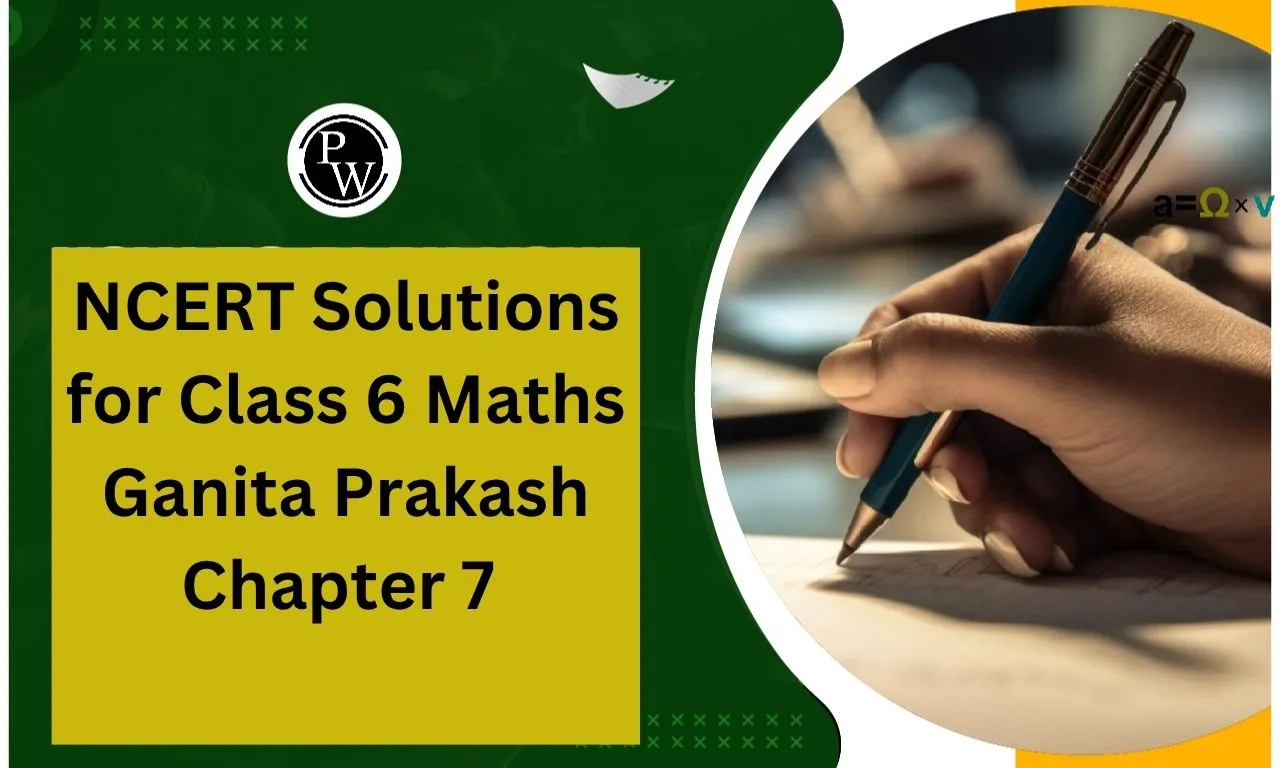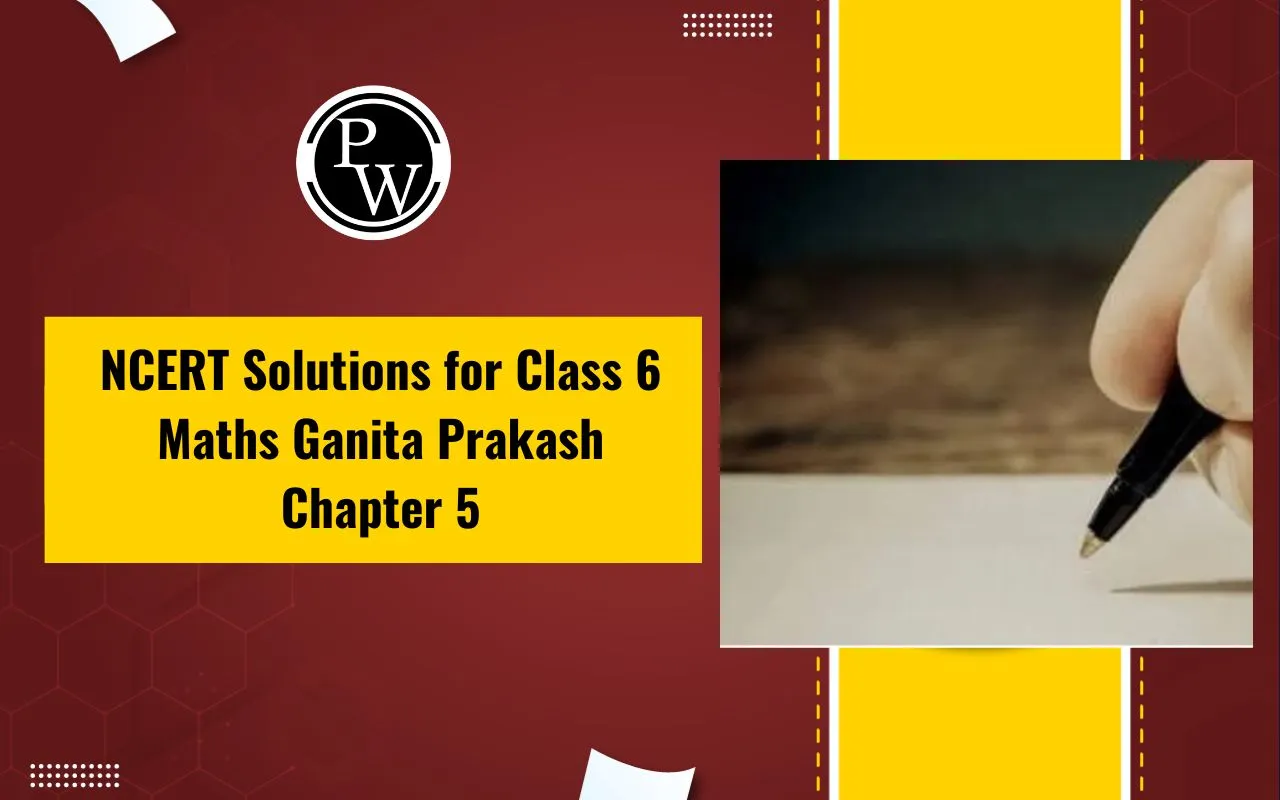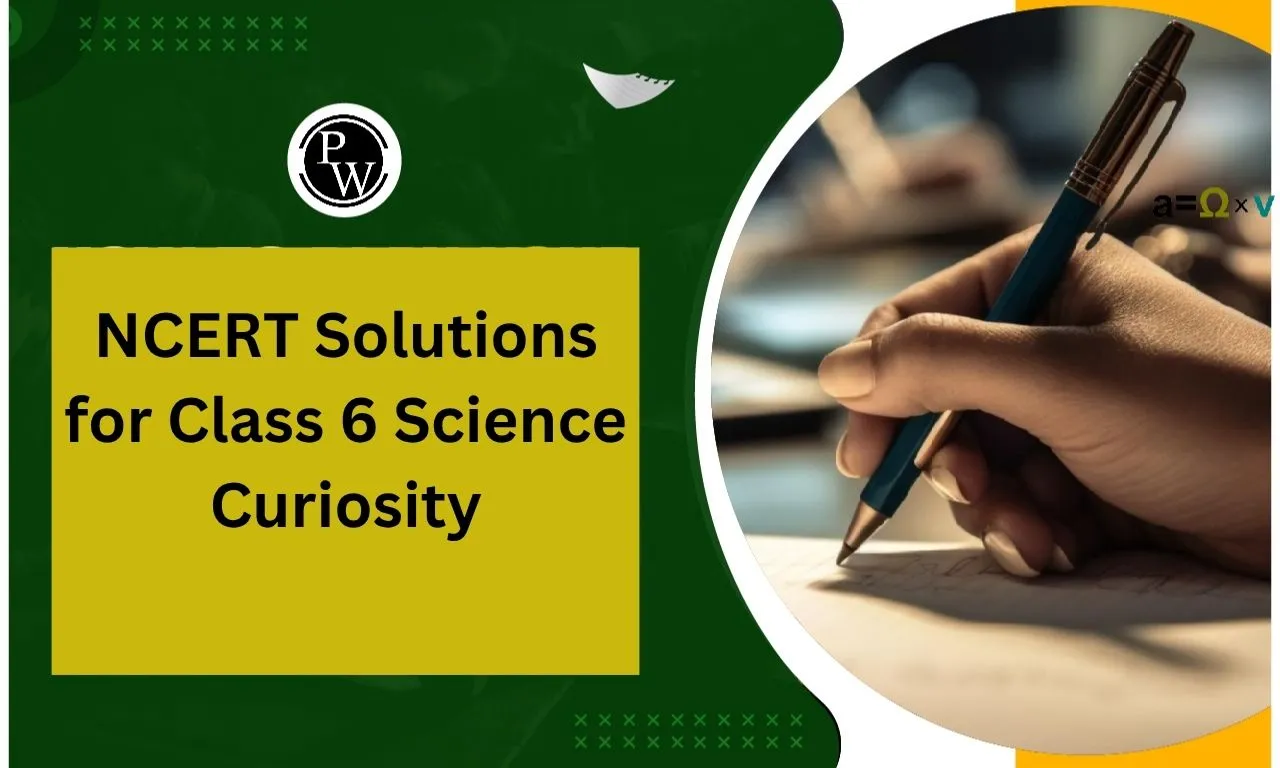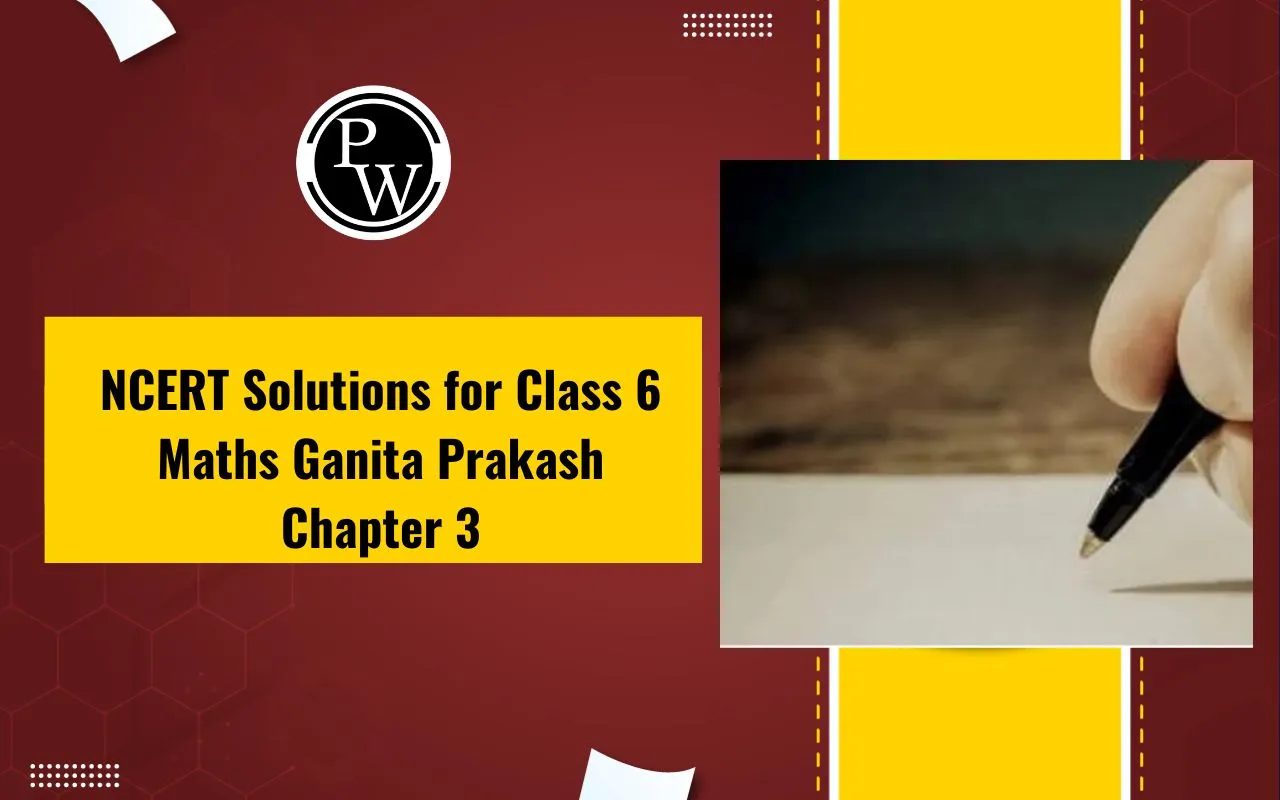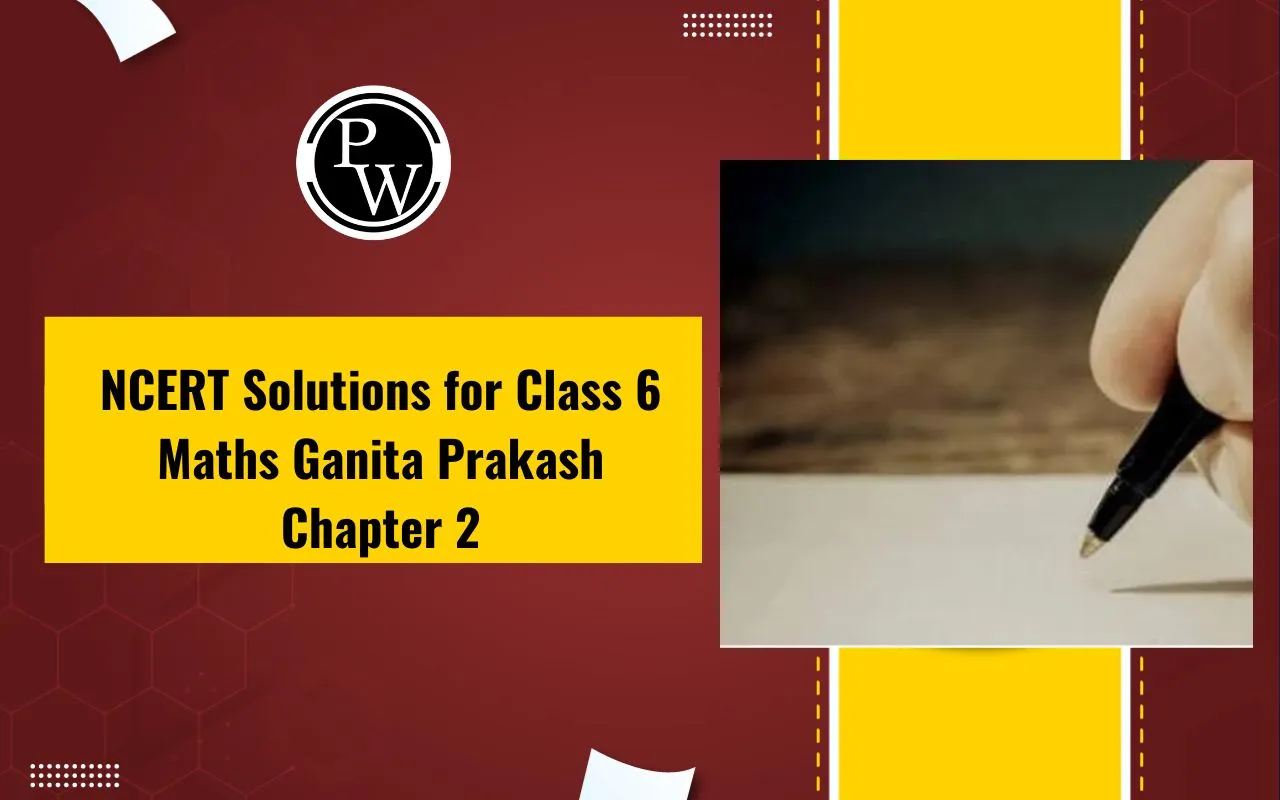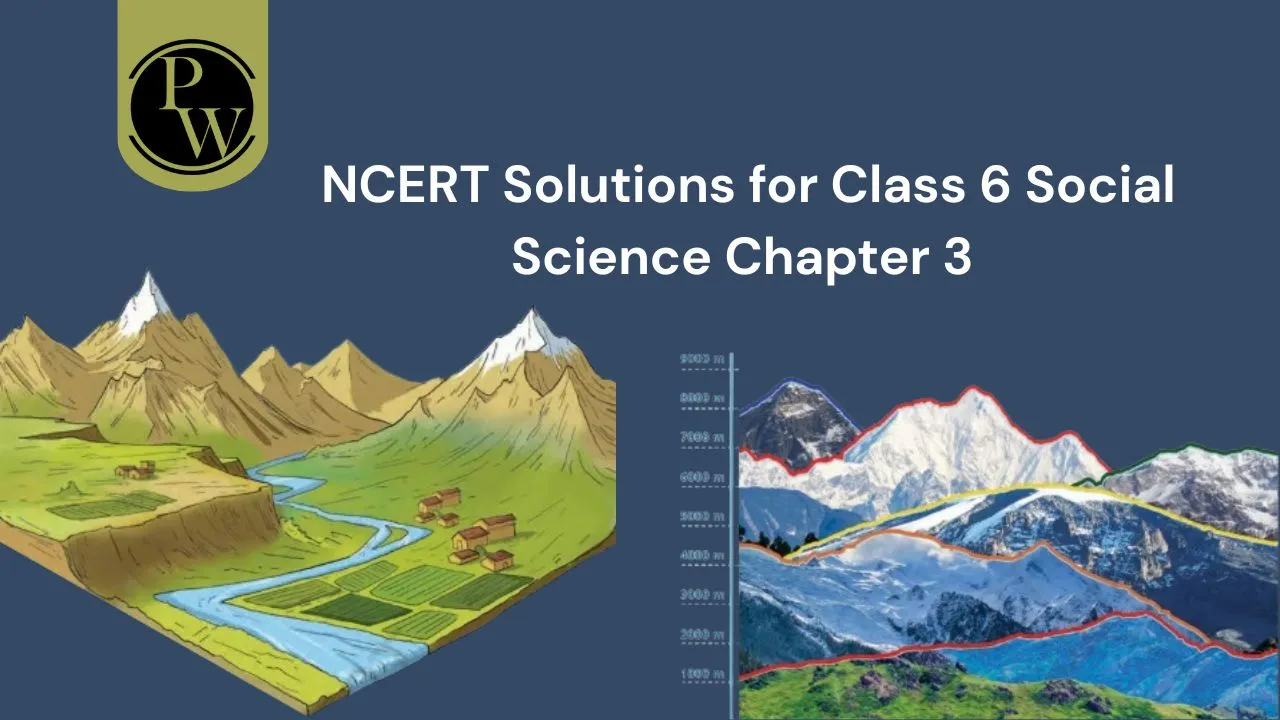
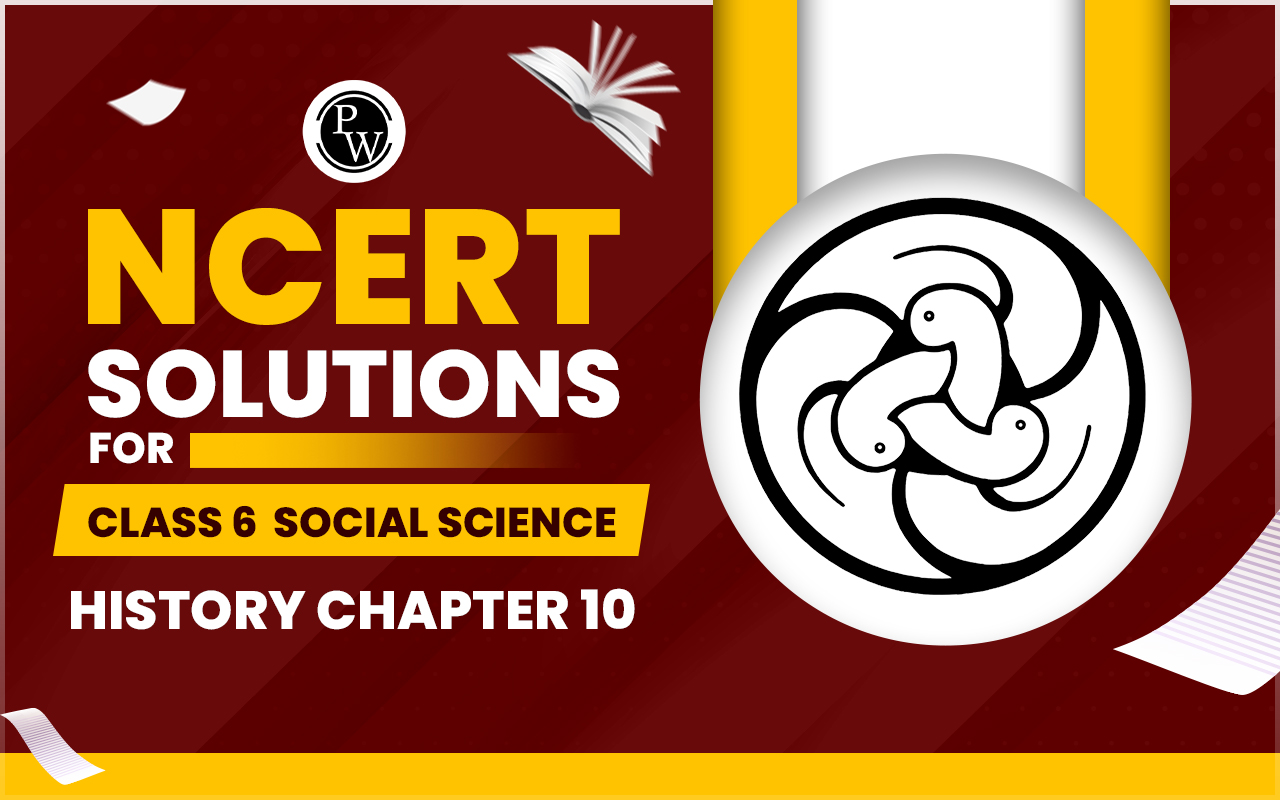
NCERT Solutions for Class 6 Social Science History Chapter 10
NCERT Solutions for Class 6 Social Science History Chapter 10: In the NCERT Solutions for Class 6 Social Science History Chapter 10, students will study Samudragupta, Harshavardhana, and South Indian kingdoms, exploring their victories and accomplishments. The set of questions includes eight queries, and we've supplied responses to all of them in the NCERT Solutions for Class 6 Social Science History Chapter 10 "New Empires and Kingdoms." These solutions are crafted following a thorough examination of the curriculum and exam structure. The answers are presented in plain language to ensure easy comprehension for students. Reviewing these solutions will simplify their exam readiness.NCERT Solutions for Class 6 Social Science History Chapter 10 PDF Download
NCERT Solutions for Class 6 Social Science History Chapter 10 New Empires and Kingdoms
NCERT Solutions for Class 6 Social Science History Chapter 10 are given below for CBSE class 6 students to refer to: Question 1 State whether true or false:- Harishena wrote a prashasti, praising Gautamiputra Shri Satakarni.
- Leaders from Aryavarta presented gifts to Samudragupta.
- Dakshinapatha had twelve rulers.
- Taxila and Madurai were significant places governed by the Gupta leaders.
- Aihole served as the Pallavas' capital.
- In South India, local assemblies operated for many years.
- False
- True
- True
- False
- False
- True.
NCERT Solutions for Class 6 Social Science History
Question 2 Mention three authors who wrote about Harshavardhana. Answer: The following three authors wrote about Harshavardhana:- Banabhatta
- Xuan Zang (Hien T-Sanga)
- Ravikirti ‘
- It is claimed by some historians that Harshavardhana, himself also wrote some books about himself and the people of his kingdom
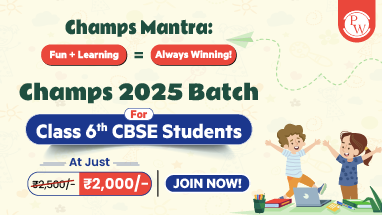 Question 3
What changes do you find in the army at this time?
Answer:
We find the following changes in the army at this time:
1.
The king or ruler maintained a standing army that was well-organised.
2.
Soldiers employed various weapons like battle-axes, arrows, spikes, spears, barbed darts, swords, iron clubs, javelins, barbed arrows, long arrows, etc.
3.
On the royal grounds, elephants, chariots, cavalry, and foot soldiers were used.
4.
Additionally, there were military leaders who supplied the king with troops when needed. Instead of regular salaries, some of them were given land grants. They earned revenue from the land to support soldiers, horses, and obtain war equipment. These men were called Samantas. If the ruler was weak, Samantas attempted to gain independence.
Question 4
What were the new7 administrative arrangements during this period?
Answer:
The following new administrative arrangements were noticed during this period:
1.
Kings took various measures to gain the support of influential individuals, whether due to their economic, social, or political and military prowess. Some significant administrative roles became passed down within families, where sons inherited positions from their fathers. For instance, the poet Harishena, like his father, held the position of a Maha-danda-nayaka, which is a chief judicial officer.
2.
At times, a single person assumed multiple roles. Harishena, in addition to being a Maha-danda-nayaka, served as a Kumar-amatya, signifying an important minister, and a Sandhi-Vigrahika, indicating a minister responsible for matters of war and peace.
3.
Moreover, influential individuals likely had a say in local governance. These figures encompassed the nagara-shreshthi, who was the chief banker or merchant of the city, the Sarthavaha, the leader of merchant caravans, the Prathama-Kulika, the chief craftsman, and the head of the Kayasthas, who were the scribes.
Question 3
What changes do you find in the army at this time?
Answer:
We find the following changes in the army at this time:
1.
The king or ruler maintained a standing army that was well-organised.
2.
Soldiers employed various weapons like battle-axes, arrows, spikes, spears, barbed darts, swords, iron clubs, javelins, barbed arrows, long arrows, etc.
3.
On the royal grounds, elephants, chariots, cavalry, and foot soldiers were used.
4.
Additionally, there were military leaders who supplied the king with troops when needed. Instead of regular salaries, some of them were given land grants. They earned revenue from the land to support soldiers, horses, and obtain war equipment. These men were called Samantas. If the ruler was weak, Samantas attempted to gain independence.
Question 4
What were the new7 administrative arrangements during this period?
Answer:
The following new administrative arrangements were noticed during this period:
1.
Kings took various measures to gain the support of influential individuals, whether due to their economic, social, or political and military prowess. Some significant administrative roles became passed down within families, where sons inherited positions from their fathers. For instance, the poet Harishena, like his father, held the position of a Maha-danda-nayaka, which is a chief judicial officer.
2.
At times, a single person assumed multiple roles. Harishena, in addition to being a Maha-danda-nayaka, served as a Kumar-amatya, signifying an important minister, and a Sandhi-Vigrahika, indicating a minister responsible for matters of war and peace.
3.
Moreover, influential individuals likely had a say in local governance. These figures encompassed the nagara-shreshthi, who was the chief banker or merchant of the city, the Sarthavaha, the leader of merchant caravans, the Prathama-Kulika, the chief craftsman, and the head of the Kayasthas, who were the scribes.
NCERT Solutions for Class 6 Social Science History Chapter 2
Question 5 What do you think Arvind would have to do if he was (were) acting as Samudragupta? Answer: Arvind would have to do the following things if he was (were) acting as Samudragupta:- He had to march solemnly in splendid robes, to twirl his moustaches and wield the silver-paper wrapped sword with gusto.
- He had to sit on the throne and play the veena and recite poetry.
- He had to fight several battles.
- He had to keep and help Harishena, a poet of Sanskrit in his court.
- Name of my great grandfather.
- Name of my grandfather.
- Name of my father and mother.
- The name/names of son or sons.
- The name/names of my grandchildren.
- Great Grandfather
- Grandfather
- Parents
- My own name
- Names of my son and grandson.
NCERT Solutions for Class 6 Social Science History Chapter 5
Question 8 How do you think wars affect the lives of ordinary people today? Answer: Today wars affect the lives of ordinary people today in the following ways: 1. Many people lose their lives in great numbers. 2. Their houses, shops, and other belongings get ruined. 3. Wars bring about violence and unrest in society. 4. Government initiatives for the well-being of the people, like development projects and welfare programs, face disruptions and delays. 5. Wars deplete economic and other resources, leading the government to often impose additional taxes on the people.MULTIPLE CHOICE QUESTIONS
Choose the correct option to complete the statements given below: (i) The first ruler of the Gupta dynasty who adopted the grand title of maharaj- adhiraja was(a) Samudragupta
(b) Chandragupta
(c) Skandagupta
(d) Both (a) and (c).
(ii) We learn about Gupta rulers from the(a) Inscriptions
(b) Prashastis
(c) Coins
(d) Both (a) and (c).
(iii) Harsha’s brother-in-law was the ruler of(a) Kanauj
(b) Patliputra
(c) Ujjain
(d) Prayaga.
(iv) Pulakeshin II was a ruler of(a) Chalukya dynasty
(b) Pallava dynasty
(c) Gupta dynasty
(d) Chola dynasty,
(v) We come to know about Harshavardhana from(a) The biography was written by Banabhatta
(b) The account of Xuan Zang
(c) Both (a) and (b)
(d) Neither (a) nor (d).
Ans.(i) – (b), (ii) – (d), (iii) – (a), (iv) – (a), (v) – (c).
NCERT Solutions for Class 6 Social Science History Chapter 1
FILL IN THE BLANKS
Fill in the blanks with appropriate words to complete each sentence.- Kumara Devi, the mother of Samudragupta belonged to the …………………… gana.
- ……………., a Chinese pilgrim, spent a lot of time at Harsha’s court and left a detailed account of what he saw.
- Harshavardhana’s success was checked by ………………., a chalukya ruler.
- The two important ruling dynasties in south India during this period were the ………. and the ………..
- The Raichur Doab was situated between the rivers …………………. and ………….
- The ……… and ……….. were the new dynasties which took the place of the Pallavas and the Chalukyas.
- Whenever the Samantas found the ruler weak and inefficient, they tried to become
- The untouchables during this period were treated badly and were expected to live in the city.
- Lichchhavi
- Xuan Zang
- Pulakeshin II
- Pallavas, Chalukyas
- Krishna, Tungabhadra
- Rashtrakuta, Chola
- independent
- outskirts
III. TRUE/FALSE
State whether these sentences are true (C) or false (F).- The military leaders earned money from the land they were given and used it for their families.
- The rulers of dakshinapatha gave up to Samudragupta after losing and were not allowed to rule again.
- The descendants of the Kushanas and Shakas governed the distant areas during this time.
- Harshavaradhana became the king of Thanesar after his father and older brother passed away.
- Harshavardhana did not succeed in the east.
- Aihole was a crucial centre for business.
- The main cities of the Pallavas and Chalukyas were not very wealthy.
- The prathama-kulika referred to the main craftsman.
- False
- False
- True
- True
- True
- False
- True
- False.
NCERT Solutions for Class 6 Social Science History Chapter 3
MATCHING SKILL
Match the items in column A correctly with those given in column B. Column A Column B (i) Kalidasa (a) The court poet of Pulakeshin II (ii) Aryabhatta (b) The court poet of Samudragupta (iii) Ravikirti (c) A renowned poet during this period (iv) Harishena (d) The court poet of Harshavardhana (v) Banabhatta (e) An astronomer Ans. (i) —(c), (ii) —(e), (iii) —(a), (iv) —(b), (v) —(d).VERY SHORT ANSWER TYPE QUESTIONS
1. Who was Samudragupta? [Imp.] Ans: He was a famous ruler of the Gupta dynasty. 2. How do we know about him? Ans: We know about him from a long inscription, which is a poem in Sanskrit composed by his court poet, Harishena. 3. Where is this poem inscribed? Ans: This poem is inscribed on the Ashokan pillar at Allahabad.NCERT Solutions for Class 6 Social Science History Chapter 4
4. What was prashastis? [V. Imp.] Ans: Prashastis were poems composed by the court poets in praise of their rulers. 5, During which dynasty did prashastis gain importance? Ans: Prashastis gained importance during the Gupta dynasty. 6. What does Samudragupta’s prashasti tell us? Ans: Samudragupta’s prashasti tells us that he was a great warrior who owned several battles. 7. Name the four different kinds of rulers described by Samudragupta’s court poet, Harishena. [V. Imp.] Ans:- The rulers of Aryavarta
- The ruler of Dakshinapatha
- The inner circle of neighbouring states
- The rulers of the outlying areas.
NCERT Solutions for Class 6 Social Science History Chapter 6
15. Harishena held more than one office? Name them. Ans: Harishena held more than one office. Besides being a maha-danda-nayaka, he was a Kumar-amatya and a sandhi-vigrahika. 16. What was nagaram? Ans: It was an organisation of merchants. 17. Who controlled the local assemblies? Ans: Wealthy and powerful landowners and merchants controlled the local assemblies 18. How do we know about the lives of ordinary people during this period? Ans: We come to know about the lives of ordinary people from plays like Kalidasa’s Abhijnana Shakuntalam and accounts left by Chinese pilgrims like Fa Xian.SHORT ANSWER TYPE QUESTIONS
1. How does Samudragupta’s prashasti describe him? [V. Imp.]
Ans: In the praise poem about Samudragupta, the poet spoke highly of him. As per this writing, Samudragupta was an excellent fighter, winning battles. He was a knowledgeable king and a top-notch poet. The prashasti considered him comparable to the gods. Samudragupta, a courageous ruler of the Gupta dynasty, had a wide-ranging influence. 2. Describe Samudragupta as a warrior as mentioned in the prashasti? Ans: Samudragupta, a notable leader of the Gupta dynasty, was also a courageous fighter. He achieved success in various battles. His physique was attractive, adorned with numerous scars from battle-axes, arrows, spikes, spears, barbed darts, swords, iron clubs, javelins, barbed arrows, long arrows, and various other weapons.NCERT Solutions for Class 6 Social Science History Chapter 7
3. What was the difference between the way in which Samudragupta treated the rulers of Aryavarta and Dakshinapatha? Ans: Samudragupta had strict rules for the leaders of Aryavarta. He defeated all nine of them strongly and included their kingdoms in his empire. However, when dealing with the rulers of Dakshinapatha, Samudragupta showed a more submissive attitude. Twelve rulers surrendered to him after being defeated, and he permitted all of them to rule again. 4. What do you know about Harshavardhana? Describe the main events of his career.[V. Imp.] Ans:- Harshavardhana governed around 1400 years in the past.
- Information about him is found in his biography, written by his court poet Banabhatta.
- This biography is called Harshacharita and is written in Sanskrit.
- Another way to learn about him is from Xuan Zang's record that he left behind.
- Harshavardhana became the ruler of Thanesar after his father and elder brother passed away.
- He took control of the kingdom of Kanauj after his brother-in-law was killed by the ruler of Bengal.
- Harsha led an army against the ruler of Bengal.
- He achieved success in the east, conquering both Magadha and Bengal. However, he faced defeat when attempting to cross the Narmada.
NCERT Solutions for Class 6 Social Science History Chapter 8
6. Pulakeshin II was the best-known ChaLukya ruler. Explain in brief. [V. Imp.] Ans: We come to know about Pulakeshin II from a prashasti, composed by his court poet Ravikirti. According to this prashasti Pulakeshin got the kingdom from his uncle. He led expeditions along both the west and the east coasts. Besides, he checked the advance of Harshavardhana when he tried to cross the Narmada to march into the Deccan. The prashasti also tells us that Pulakeshin also attacked the Pallava king, who took shelter behind the walls of Kanchipuram. 7. What was the condition of ordinary people in the kingdoms? Describe in brief. Ans: The plays and writings of travellers from other countries, like the Chinese pilgrim Fa Xian, especially focus on the lives of regular folks.- Kalidasa's plays give us a glimpse into life at the king's court. In his works, the king and most Brahmins speak Sanskrit, while others, like women and men, use Prakrit.
- Fa Xian's writings shed light on the challenges faced by the untouchables. Powerful and influential people mistreated these individuals in the kingdom, directing them to reside strictly on the city outskirts.
- He also had animals like goats, deer, rabbits, etc., along with carts carrying vegetables and spices.
- A group of musicians travelled with the king's large army.
- People from villages brought presents like curds, gur, and flowers for the king. They also offered shelter for the animals.
- Once the army moved through, the entire area was covered in dust. Elephants sometimes flattened the huts of villagers.
NCERT Solutions for Class 6 Social Science History Chapter 9
LONG ANSWER TYPE QUESTIONS
1.Describe Samudragupta’s policies towards the- rulers of Aryavarta
- rulers of Dakshinapatha
- inner circle of neighbouring states, and
- rulers of the outlying areas. [V. Imp.]
- The Aryavarta rulers, totaling nine, saw their kingdoms assimilated into Samudragupta's empire after being uprooted.
- In Dakshinapatha, twelve rulers faced defeat by Samudragupta. Despite surrendering, Samudragupta displayed mercy, allowing them to resume their rule.
- Neighbouring states like Assam, Coastal Bengal, Nepal, and various gana Sanghas in the northwest paid tribute to Samudragupta, obeying his commands and attending his court.
- Rulers from outlying regions, potentially descendants of the Kushanas and Shakas, along with the ruler of Sri Lanka, submitted to Samudragupta and offered their daughters in marriage.
- The Pallavas. The Pallavas' rule extended from the area near their capital, Kanchipuram, to the Kaveri delta.
- The Chalukyas. The Chalukyas' realm was focused on the Raichur Doab, located between the rivers Krishna and Tungabhadra. Their main city was Aihole, serving as a significant trade and religious hub with numerous temples.
Benefits of NCERT Solutions for Class 6 Social Science History Chapter 10
NCERT (National Council of Educational Research and Training) is an autonomous organisation in India that develops and publishes textbooks and educational resources for schools. NCERT solutions for Class 6 History, as well as other subjects, offer several advantages:- Aligned with the Curriculum: NCERT solutions are designed to align with the official curriculum prescribed by educational boards. For Class 6, these solutions follow the CBSE (Central Board of Secondary Education) curriculum, ensuring that students cover the necessary topics and concepts.
- Comprehensive Coverage: NCERT solutions provide a comprehensive coverage of the topics included in the curriculum. This helps students understand the subject matter thoroughly, ensuring they are well-prepared for examinations.
- Clear and Concise Explanations: The solutions provided in NCERT textbooks are known for their clear and concise explanations. This helps students grasp complex concepts easily and enhances their understanding of historical events and developments.
- Structured Learning: The content in NCERT solutions is organised in a structured manner, making it easier for students to follow a logical progression of topics. This structured approach aids in building a strong foundation in history.
- Balanced Perspective: NCERT textbooks are known for presenting a balanced perspective on historical events. They aim to avoid biases and present historical facts in an unbiased manner, encouraging students to develop a more objective understanding of history.
- Quality of Content: NCERT is a reputable institution known for maintaining high educational standards. The content in their textbooks and solutions is well-researched and reviewed, ensuring accuracy and reliability.
- Use of Engaging Illustrations and Maps: NCERT textbooks often include engaging illustrations, maps, and diagrams to enhance the learning experience. Visual aids can help students visualise historical events and understand geographical contexts.
- Preparation for Competitive Exams: NCERT solutions serve as a foundation for various competitive exams. Many entrance exams and scholarship tests draw their questions from the NCERT curriculum. Therefore, using these solutions can prepare students for a wide range of examinations.
- Encourages Critical Thinking: The questions and activities provided in NCERT solutions often encourage critical thinking and analytical skills. This approach helps students go beyond rote memorization and develop a deeper understanding of historical concepts.
NCERT Solutions for Class 6 Social Science History Chapter 11
NCERT Solutions for Class 6 Social Science History Chapter 10 FAQs
Are there any real-world examples that relate to the trade routes discussed in the chapter?
What role did geography play in the establishment of trade routes and kingdoms?
How can visual aids enhance the study of historical concepts in Chapter 10?
Is there a connection between the events in Chapter 10 and the present day?
Can you recommend additional resources for further exploration of the chapter?




